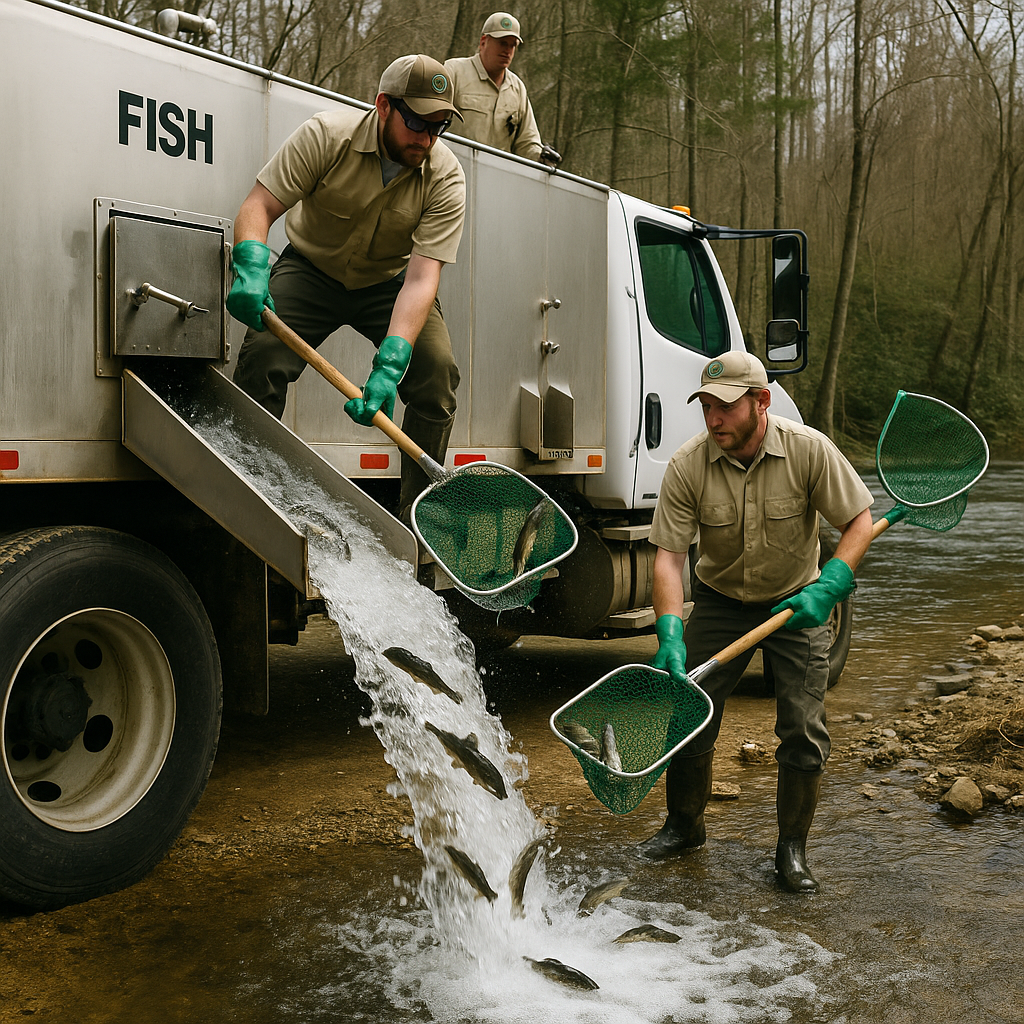When it comes to stocked trout fishing in North Carolina, nothing beats a well-timed trip to Hatchery Supported waters. These are accessible creeks, rivers, and lakes stocked with trout for both new anglers and seasoned fly fishers who want action close to the road.
Here’s a roundup of NC Hatchery Supported waters organized by county.
Alleghany County
- Bledsoe Creek
- Little River
- Big Glade Creek
- Big Pine Creek
- Brush Creek
Avery County
- Linville River
- Mill Timber Creek
Buncombe County
- Ivy River
- Reems Creek
Clay County
- Buck Creek
- Tusquitee Creek
Haywood County
- Cold Springs Creek
- Jonathan Creek
Henderson County
- Green River
Madison County
- Little Ivy River
- Max Patch Pond
Polk County
- Green River
Macon County
- Cliffside Lake
- Cullasaja River
Madison County
- Shelton Laurel Creek
- Spillcorn Creek
Watauga County
- Beaverdam Creek
- Beech Creek
- Cove Creek
- Dutch Creek
- Laurel Creek
- Meat Camp Creek
- Middle Fork New River
- Norris Fork
- South Fork New River
✅ What Is Hatchery Supported Water?
These waters are stocked by the NC Wildlife Resources Commission and open to public fishing. They often don’t require catch-and-release and have more liberal harvest rules than wild-designated streams. You’ll see green-and-white signage posted at access points.
- No bait restrictions
- Open during specific seasons
- Fun and accessible fishing for all skill levels
🎯 Want to Make the Most of These Waters?
Bring your spinning rod or fly setup and get out early. Stocking often happens the night before or early morning—so showing up mid-morning or the day after gives you the best chance at freshly stocked trout.
🗺 Tip: Check NCWRC’s interactive stocking map or visit the stream a few days before to scout conditions.
📘 Read More in The Call of the Creek
If you enjoy creek fishing, you’ll love The Call of the Creek: The Art & Soul of Fly Fishing for Wild Trout. It’s not just about catching—it’s about discovering something deeper in the waters we often overlook.
Grab your copy on Amazon and bring it with you to the next bend in the stream.
